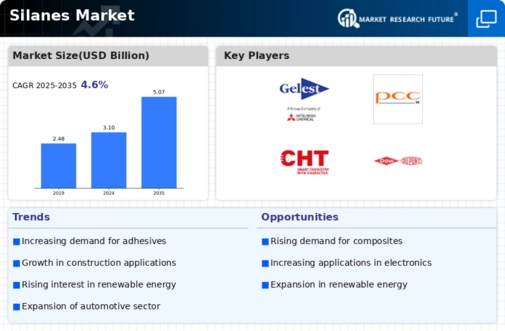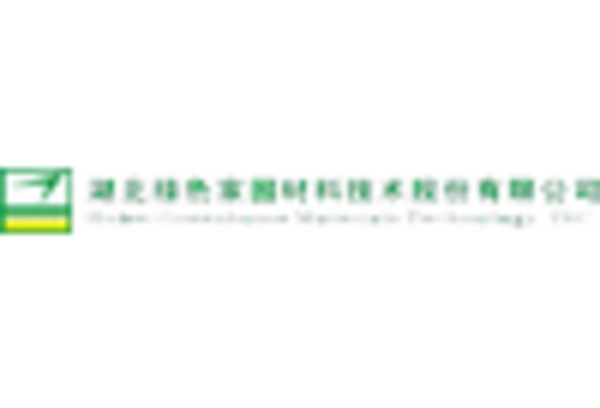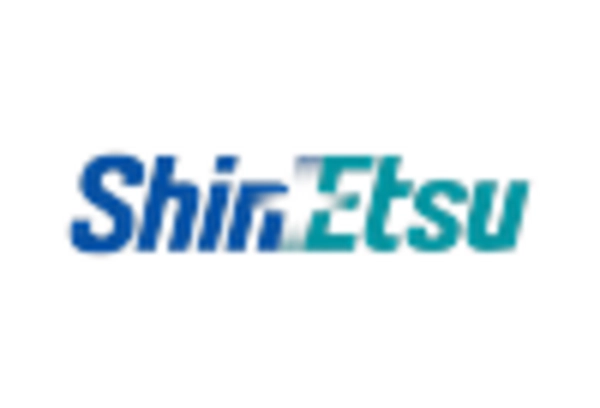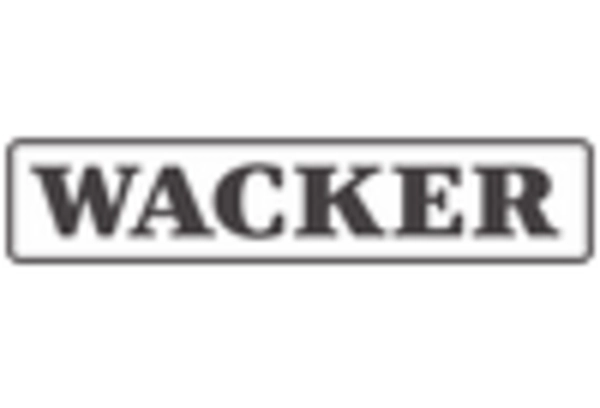Growing Electronics Sector
The electronics sector is witnessing a rapid expansion, which is positively impacting the Silanes Market. Silanes are increasingly utilized in the production of semiconductors, coatings, and adhesives, which are essential components in electronic devices. The market for silanes in electronics is projected to grow significantly, driven by the rising demand for consumer electronics and the proliferation of smart devices. According to recent estimates, the electronics industry is expected to reach a valuation of over 1 trillion dollars by 2026, creating substantial opportunities for silanes. Furthermore, the integration of silanes in electronic applications enhances the performance and reliability of devices, making them indispensable in modern technology. Thus, the growth of the electronics sector serves as a critical driver for the Silanes Market.
Increased Focus on Renewable Energy
The shift towards renewable energy sources is becoming a pivotal driver for the Silanes Market. Silanes are utilized in the production of photovoltaic cells and wind turbine components, which are essential for harnessing solar and wind energy. As countries strive to meet their renewable energy targets, the demand for silane-based materials is expected to rise. The renewable energy sector is projected to grow at a CAGR of over 8% in the coming years, indicating a robust market potential for silanes. This growth is further supported by government initiatives promoting clean energy technologies. Consequently, the increased focus on renewable energy not only enhances the sustainability of energy production but also propels the growth of the Silanes Market.
Expansion of Automotive Applications
The automotive industry is undergoing a transformation, with a growing emphasis on lightweight materials and enhanced performance. Silanes are increasingly being integrated into automotive applications, particularly in the production of composites and coatings. The Silanes Market is likely to benefit from this trend, as manufacturers seek to improve fuel efficiency and reduce emissions. The automotive sector is projected to grow at a CAGR of approximately 4% over the next few years, driven by the rising demand for electric vehicles and advanced driver-assistance systems. Silanes play a crucial role in enhancing the mechanical properties of automotive materials, thereby contributing to the overall performance and safety of vehicles. As the automotive industry continues to evolve, the expansion of silane applications is expected to be a significant driver for the Silanes Market.
Rising Demand in Construction Sector
The construction sector is experiencing a notable surge in demand for silanes, primarily due to their application in enhancing the durability and performance of construction materials. Silanes Market benefits from the increasing use of silane-based products in concrete and sealants, which improve water resistance and adhesion. As urbanization accelerates, the need for high-performance building materials becomes paramount. The market for silanes in construction is projected to grow at a compound annual growth rate (CAGR) of approximately 5% over the next few years, indicating a robust expansion. This growth is further fueled by the trend towards sustainable construction practices, where silanes play a crucial role in developing eco-friendly materials. Consequently, the rising demand in the construction sector is a significant driver for the Silanes Market.
Advancements in Chemical Manufacturing
Innovations in chemical manufacturing processes are significantly influencing the Silanes Market. The development of more efficient synthesis methods for silanes has led to reduced production costs and improved product quality. For instance, advancements in catalytic processes and the use of renewable feedstocks are becoming increasingly prevalent. These innovations not only enhance the performance characteristics of silanes but also align with the growing emphasis on sustainability within the chemical industry. As manufacturers adopt these advanced techniques, the availability of high-purity silanes is expected to increase, thereby expanding their application across various sectors, including electronics and automotive. The ongoing advancements in chemical manufacturing are likely to propel the growth of the Silanes Market, as companies seek to leverage these innovations to meet evolving consumer demands.


















Leave a Comment